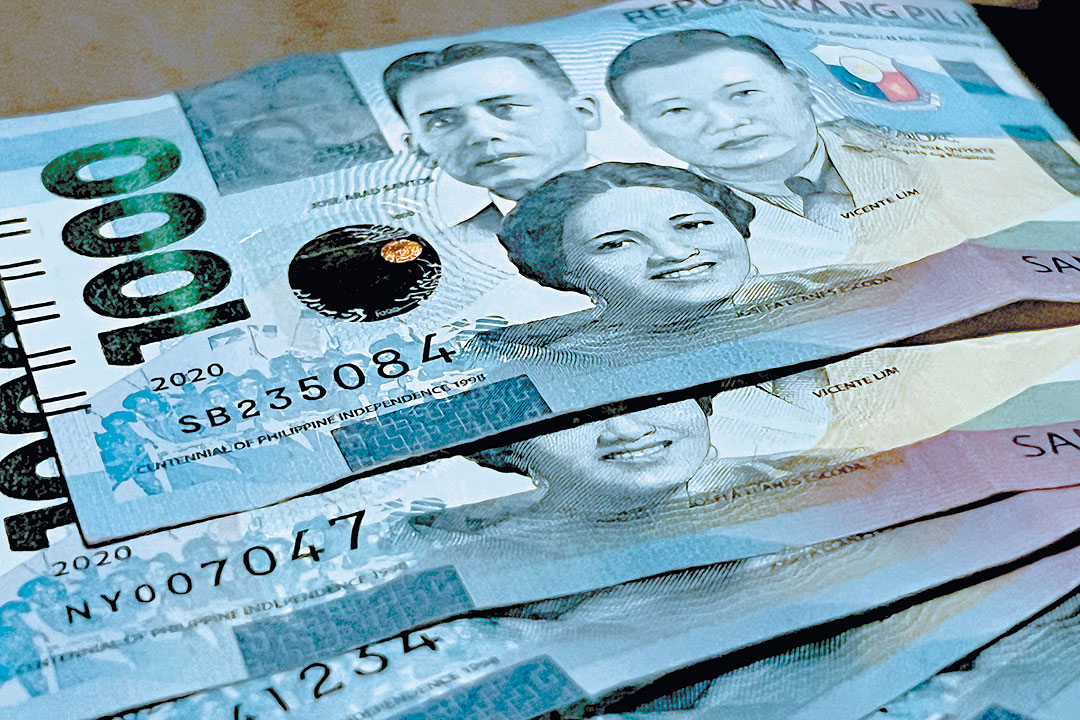
By Luisa Maria Jacinta C. Jocson, Reporter
THE PHILIPPINE banking system’s gross nonperforming loan (NPL) ratio eased in September, preliminary data from the Bangko Sentral ng Pilipinas (BSP) showed.
The banking industry’s gross NPL ratio slipped to 3.47% in September from the over two-year high of 3.59% in August. However, it was still higher than 3.4% in the same period in 2023.
This was also the lowest NPL ratio in five months or since the 3.45% posted in April.
Loans are considered nonperforming once they remain unpaid for at least 90 days after the due date. These are deemed as risk assets since borrowers are unlikely to pay.
BSP data showed that bad loans inched up by 0.9% to P517.45 billion in September from P512.7 billion in the previous month.
Year on year, soured loans jumped by 16.5% from P444.3 billion.
The total loan portfolio of Philippine banks stood at P14.9 trillion in September, up by 4.2% from P14.3 trillion in August. It also climbed by 14.1% from P13.06 trillion a year earlier.
Past due loans inched up by 0.2% to P632.9 billion in September from P631.4 billion in the prior month. Year on year, past due loans increased by 15% from P549.9 billion.
This brought the past due loan ratio to 4.25% in September, lower than 4.42% in August but above 4.21% a year prior.
Restructured loans went up by 0.5% to P294.5 billion in September from P293.2 billion a month ago. However, it declined by 4.1% from P307.2 billion a year earlier.
Restructured loans accounted for 1.98% of the industry’s total loan portfolio in September, lower than 2.05% in the previous month and 2.35% a year ago.
In September, banks’ loan loss reserves were almost flat (0.07%) at P482.8 billion from P482.5 billion a month prior. Meanwhile, it rose by 4.8% from P460.8 billion year on year.
This brought the loan loss reserve ratio to 3.24%, lower than 3.37% last month and 3.53% in the same month in 2023.
Lenders’ NPL coverage ratio, which gauges the allowance for potential losses due to bad loans, slipped to 93.31% in September from 94.11% in August and 103.71% a year prior.
“Banks’ NPL ratio improved amid faster loan growth in recent months that effectively expanded the denominator and helped ease the NPL ratio mathematically,” Rizal Commercial Banking Corp. Chief Economist Michael L. Ricafort said in a Viber message.
The latest data from the BSP showed bank lending grew by 11% year on year to P12.4 trillion in September, its fastest pace in nearly two years or since 13.7% in December 2022.
The NPL ratio could also continue to improve further in the coming months, Mr. Ricafort said.
“The latest RRR (reserve requirement ratio) cuts that effectively infused about P400 billion into the financial system would allow banks to increase their loanable funds that could lead to faster loan growth and would mathematically lead to lower NPL ratio,” he said.
The BSP reduced the RRR for universal and commercial banks and nonbank financial institutions with quasi-banking functions by 250 basis points (bps) to 7% from 9.5%, effective on Oct. 25.
Further rate cuts by the US Federal Reserve and Philippine central bank would also lead to more demand for loans, Mr. Ricafort said.
“Thus, banks’ asset quality would still improve in terms of further easing of banks’ NPL ratio, in an environment made more conducive by expected Fed and local policy rate cuts for the coming months,” he added.
Last week, the US central bank reduced its policy rate by a quarter of a percentage point to the 4.5-4.75% range.
Meanwhile, the Bangko Sentral ng Pilipinas (BSP) has so far reduced borrowing costs by 50 bps this year since it began its easing cycle in August.
The Monetary Board delivered 25-bp rate cuts at each of its August and October meetings, bringing the key rate to 6%. Its final policy review for the year is scheduled for Dec. 19.
